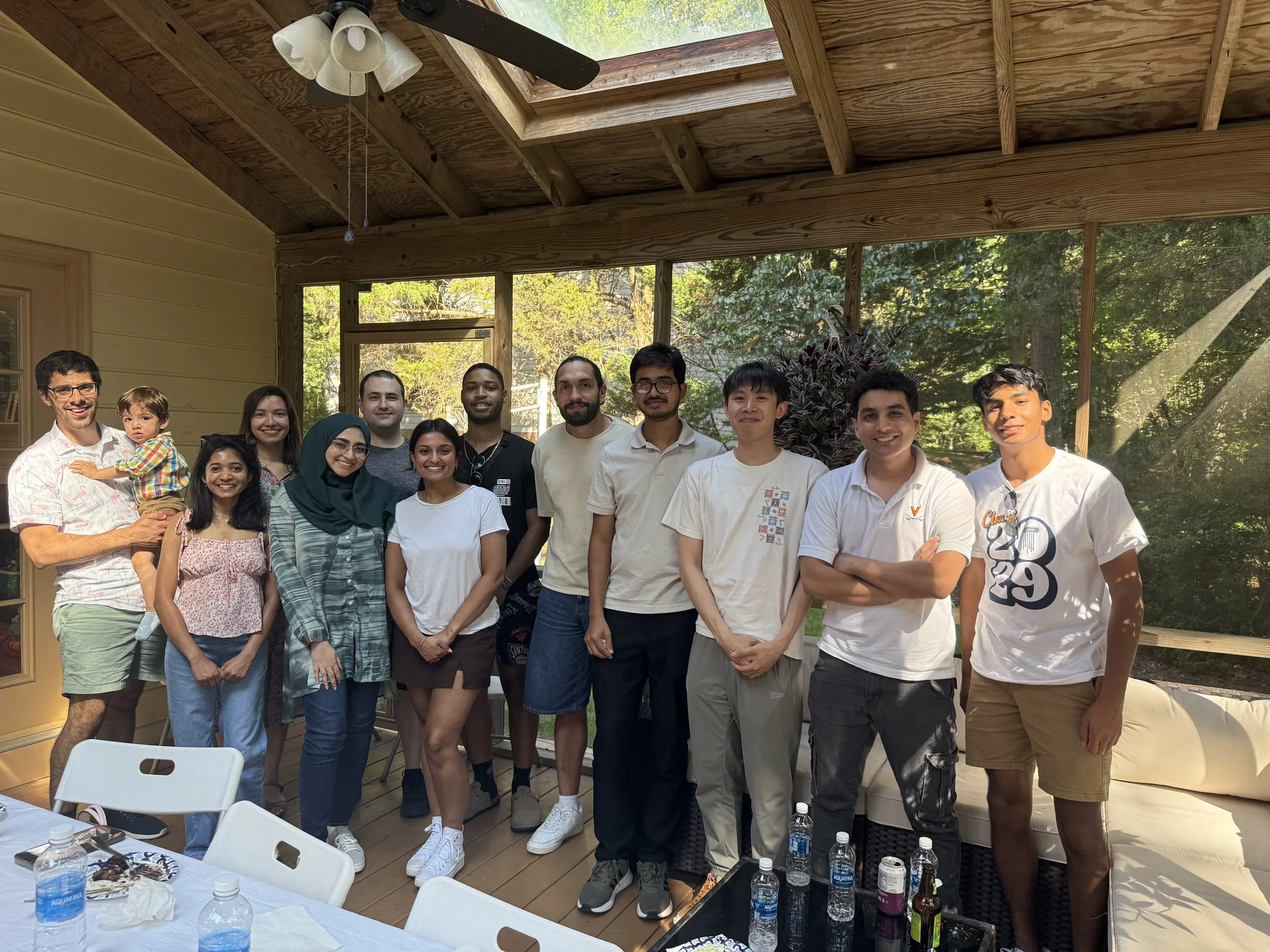Our Research
We study adsorption Processes and use high-throughput methods to create new bioseparation/chromatography materials and smart drug delivery vehicles
Chemically modified surfaces offer exciting opportunities to develop materials with tunable molecular interactions or stimuli-responsive behaviors. These desirable surface properties are important in a range of application spaces including biomanufacturing, precision medicine, and analytical chemistry.
The Vecchiarello Lab studies interfacial adsorption phenomena to design novel peptide-functionalized materials with desired properties. Our lab works at the intersection of academia and industry to create new bioseparation materials and nanoparticle-based drug delivery vehicles to solve pressing, real-world problems. We are excited to develop strategies for discovering functionalized surfaces from large synthetic peptide libraries and to a gain fundamental understanding of adsorption processes on these surfaces using biophysical characterization techniques.
Designing Next-Generation Chromatographic Resins for Biomanufacturing
Within biomanufacturing, sorptive separations are the workhorse for purifying protein therapeutics, vaccines, and cell & gene therapy products. The chemical diversity of chromatographic, membrane, and filtration ligands has been largely limited to simplistic single-mode interactions (e.g., charge or hydrophobic). To create more efficient separations, a new class of “multi-modal” ligands has been introduced which contains chemical moieties synergistically interacting through charge, hydrophobicity, and hydrogen bonding. The commercial multimodal materials, however, span a narrow chemical space and recent findings have shown that they often lack orthogonal interaction behaviors. Using chemically diverse immobilized peptide and peptide-mimetic libraries, our group focuses on dramatically expanding the chemical search space for developing the next generation of multimodal ligands. We create new bioseparation materials with the goals of i.) de-bottlenecking downstream purification through dramatic improvements in chromatographic throughput, capacity, and efficiency, ii.) developing optimized orthogonal multimodal materials that operate synergistically, and iii.) designing new materials that selectively remove problematic impurities that impact product stability, shelf life, safety, and efficacy. Additionally, we apply discovery platforms to enable efficient and platformable purification solutions for emerging classes of therapeutics.
Designing Tunable Drug Delivery Vehicles
Nanoparticle systems loaded with therapeutic payloads have received significant attention as drug delivery vehicles thanks to their ability to deliver a cargo throughout the body at high doses. Considerable efforts have focused on designing intelligent systems with chemically functionalized moieties to engineer important behaviors such as preferential tissue targeting, improved pharmacokinetic properties, and improved tissue penetration. Nanoparticle systems functionalized with peptides offer an exciting opportunity to take advantage of established discovery techniques, such as phage display, to discover peptides that bind specific targets (i.e., tumors). Unfortunately, these biology-based peptide discovery techniques are largely limited to incorporation of only the 20 naturally amino acids, which are susceptible to degradation and rapid clearance in vivo. Using synthetic, non-natural peptide libraries created directly on nanoparticles, our group is developing in vivo techniques for directly discovering nanoparticle systems with desired properties including controllable pharmacokinetics and tissue-specific targeting.
Discovering New Materials for Analytical Chemistry
High performance liquid chromatography (HPLC) is an indispensable tool in science and engineering that is required for 1.) the analysis of complex biological and synthetic molecular mixtures, and 2.) the purification of chemical products, reaction intermediates, and pharmaceuticals. Despite its importance to many fields, the past several decades have seen minimal advancements in HPLC separation materials. Reversed phase liquid chromatography (RPLC), which separates based on differences in hydrophobicity, has remained the workhorse for HPLC thanks to its high resolution and compatibility with mass spectrometry (MS). RPLC, however, fails to separate molecules with similar hydrophobicities and is not compatible with strongly hydrophobic or hydrophilic molecules. Multimodal HPLC resins offer an exciting opportunity to interrogate differences in electrostatic, hydrophobic, and hydrogen bonding properties of mixtures to create efficient and selective separation materials for quickly separating and characterizing challenging mixtures where RPLC fails. Our group explores peptide libraries directly immobilized on silica-based HPLC materials to design novel multimodal resins optimized for separating different classes of complex molecular mixtures, including those found in proteomics and metabolomics applications. Our high-throughput library screening platform characterizes individual molecular interactions between mixtures and HPLC peptide resins to generate large interaction databases (~10⁶), with the aim of creating predictive and generative workflows for the in silico design of customized HPLC peptide resins.
Publications
Ram, J., Snyder, M., Belisle, C., Koley, S., Vecchiarello, N. “Defining operating regimes for partition coefficient measurements in protein chromatography.” Journal of Chromatography A 1745, 465730 (2025).
Vecchiarello, N., Timmick, SM., Cramer, S.M. “A framework for calculating orthogonal selectivities in multimodal systems directly from cell culture fluid.” Biotechnology and Bioengineering 119(1), 299-314 (2022).
Bilodeau, CL.*, Vecchiarello, N.*, Altern, S., Cramer, SM. “Quantifying orthogonality and separability: A method for optimizing resin selection and design.” Journal of Chromatography A 1628, 461429 (2020), *Equal Contribution Authors
Vecchiarello, N., Timmick, S.M., Goodwine, C., Crowell, L.E., Love, K.R., Love, C.J., Cramer, S.M. “A combined screening and in-silico strategy for rapidly designing orthogonally selective integrated downstream processes for removing process and product-related impurities.” Biotechnology and Bioengineering 116(9), 2178-2190 (2019). Awarded Editor’s Choice Article
Timmick*, S.M., Vecchiarello, N.*, Goodwine, C., Crowell, L.E., Love, K.R., Love, C.J., Cramer, S.M. “An impurity characterization based approach for the rapid development of integrated downstream purification processes.” Biotechnology and Bioengineering 115(8), 2048-2060 (2018). *Equal Contribution Authors
Join Our Team!
Undergraduate Researchers
We are always looking for enthusiastic undergraduate students that are interested in doing research!
If you are interested in joining our group, please contact Professor Vecchiarello with your CV at qzv7pp@virginia.edu









